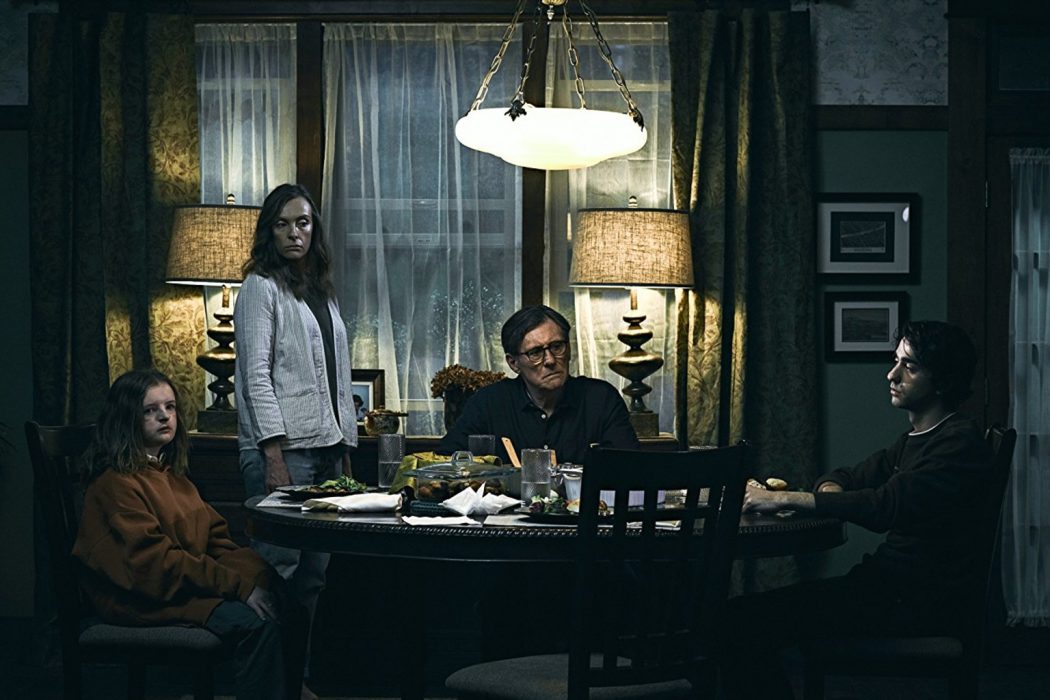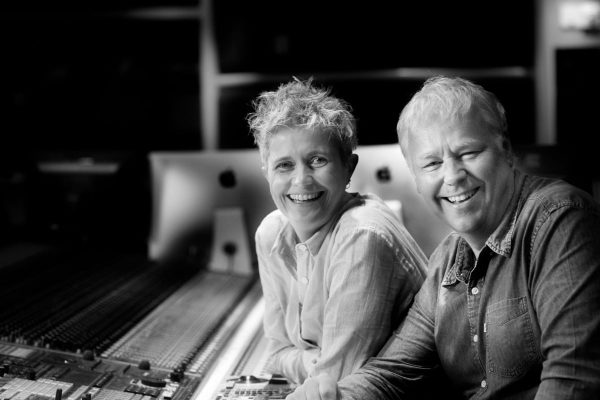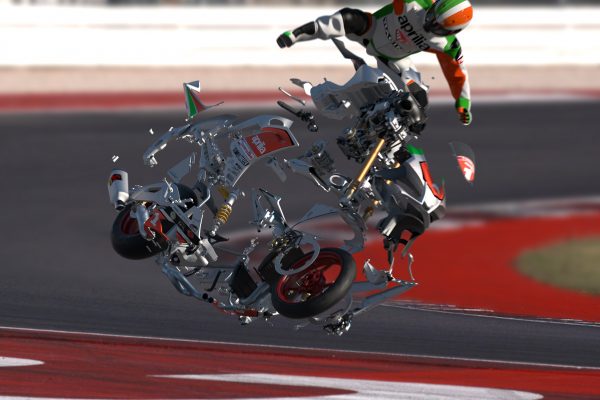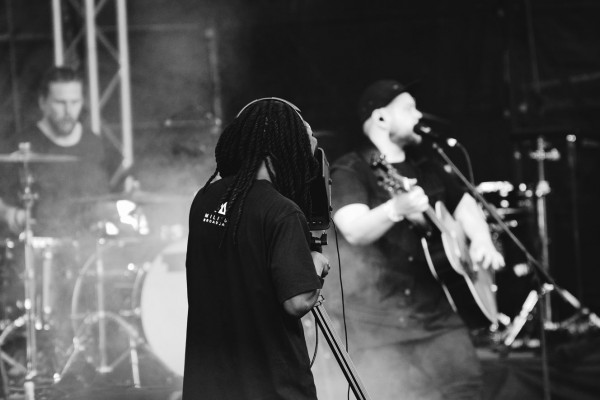We hear a lot about how those with millions of dollars at their disposal do it, but what about those who have to be more creative? First-time feature director Ari Aster’s Hereditary is the latest in a string of critically and financially successful horror movies, making over $30 million in the first two weeks of release. The story of a family (Toni Collette, Gabriel Byrne, Alex Wolff, Milly Shapiro) who are haunted following the death of their reclusive grandmother, it’s wildly expansive (but also mercurial) for its reported $10 million budget. So, how did they do it? We break down some behind the scenes footage and insights.
The house was built on a soundstage
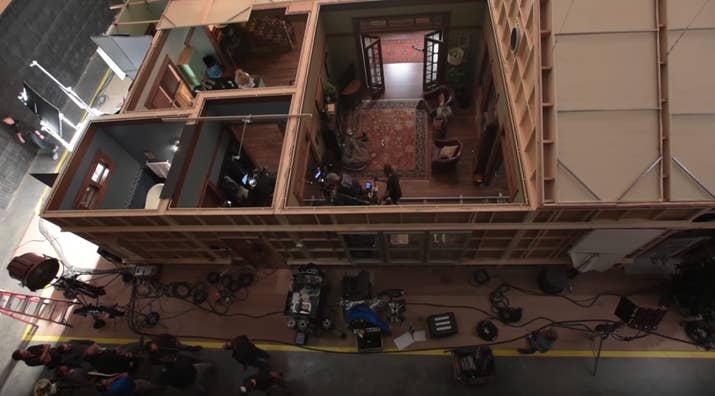
Despite the low budget, Aster chose not to film on location but to construct a sprawling, creaky, early 20th century-style house entirely on a soundstage in Utah. The set includes the first floor, that attic, and two versions of the treehouse. Weirdly appropriate for a film where miniatures are such an important part of the plot.
Preparation was essential
According to the LA Times, “Each frame of the film was meticulously planned out by Aster, who spent six months shot-listing every single shot of the film’s 156 scenes before spending another three weeks refining it all again with his director of photography, Pawel Pogorzelski, and production designer Grace Yun (“Beach Rats,” “First Reformed”).”
Which brings us back to the miniatures…
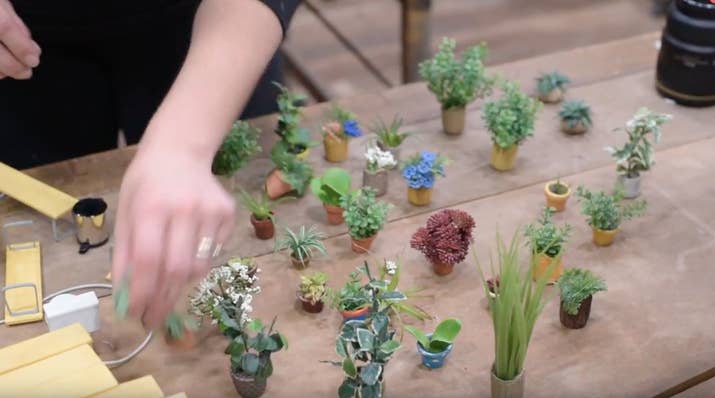
Speaking to Vulture, Aster says, “It became clear that we were going to need to build the house in order to accommodate that shot list, and also to attend to that dollhouse aesthetic. So having built it, we were able to remove walls and shoot these rooms in wides that really dwarfed the characters in their environments. We were actually having this house replicated before we had built any of it — so we needed to design the house and not just the dimensions of the spaces of each room, but also the dressings. We needed to know what plants were in each room, what drapes were over the windows, what drapes were over the beds. What was the furniture? We needed to figure out all of that stuff far in advance of shooting, because we needed to give the miniaturist, Steve Newburn, who was working in Toronto — he was also our prosthetics guy — we needed to give him ample time to replicate all of these things. Ultimately, we had the miniatures coming in the day that they were being shot because everything was so very tight. Logistically it was a nightmare, but I’m very proud of how everything came out.”
Aster shoots the big scare sequences in wide shots, a rarity for horror
Speaking to Vox, Aster says,
“I love a motivated long take that goes just as long as it should before becoming distracting or indulgent.
I am somebody who composes a shot list before I talk to anybody on the crew. Then when I’m done composing a shot list, which also requires that I map out the blocking, I sit down with my cinematographer, Pawel Pogorzelski, and production designer, Grace Yun. I take them through the movie that’s in my head, shot by shot. That way we all have the same movie in our head and we’re able to have a dialogue from there. The shot list does change because we’re all talking about it, and they have something clear in their head that they can then adjust and bring ideas to me.
I know that I’m typically bored by traditional [camera] coverage. I also find that not very fun to shoot and actually kind of nerve-racking because it’s harder to know what you have at the end of the day when you have 20 or 25 pieces for a scene and you have to know if it’s going to match. The more you shoot, the better idea you have whether this thing will match or not, because your instincts sharpen and start to grow in your gut.
When you’re shooting in sequence, when one shot goes to the point, and that’s your cutting point, and then you’re going to go to this shot, which is going to cover this portion of the scene, and then you have a cutting point here, which will then transition to this shot — you see exactly what you’re getting on that monitor. Sometimes, you need to get more takes than usual, but it’s just because you need everything to align, because you’re not covering yourself. But I personally find that it’s a more comforting way to work because I do walk away knowing what I have.
Then at the same time, I’ve also found that the more ambitious the shots, the more excited the crew is when you nail it, and the more excited I am. You set a very high goal that requires that everybody be on their toes, and then when you achieve it, it’s galvanizing. People are excited now to move on to the next shot.
On the other side of that coin, if you don’t quite get it and you have to move on because the clock is hanging over you, that can be very depressing. And you’re working on the next shot thinking about the last shot that you didn’t nail.”
He’s directed two popular – and controversial – short films
The Verge says,” The Strange Thing About the Johnsons is a melodrama about a family dealing with the specter of sexual abuse — only in this case, it’s a grown-up son who’s abusing his father. Munchausen stars Die Hard’s Bonnie Bedelia as a mother with an unhealthy attachment to her teenage child, who is willing to go to extraordinary lengths to prevent him from getting married and leaving home forever.”
NOTE: Content warning on both films
The first cut was over three hours long
Working with a low budget, Aster had to make relatively few comprimises. Speaking to Jezebel, he says, “The compromises were ones I had to make on my own. The original cut of this film was three hours long. Originally, it had 156 scenes and about 30 of those scenes left. All of that is just kind of sad family drama stuff, like heavy, dark drama stuff. All of the horror stuff was retained.”
For more insights on Hereditary, check out the behind the scenes footage.

